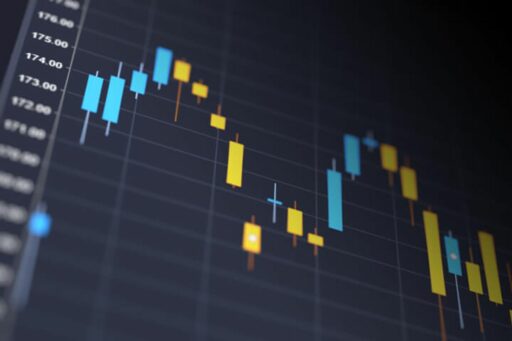Tobacco use has long been associated with health risks, but its impact on personal finances is equally alarming. This article delves into the various ways tobacco consumption can drain an individual’s financial resources, from the immediate costs of purchasing tobacco products to the long-term implications for insurance premiums and retirement savings. Additionally, we explore how the black market for tobacco exacerbates public financial strain and what strategies can be employed to mitigate these effects.
Key Takeaways
- Smoking not only harms health but also has a significant negative impact on personal finances through direct expenses and increased healthcare costs.
- Tobacco use can lead to lost productivity and reduced earnings, further straining an individual’s financial situation.
- The illicit tobacco trade undermines government tax revenues and increases public health costs, posing a challenge to economic stability.
- Strategies such as quitting programs, consumer education, and governmental policies are crucial in reducing the economic burden of tobacco use.
- Understanding the broader economic implications of tobacco use, including its effect on market dynamics and societal costs, is essential for comprehensive policy-making.
The Hidden Price Tag: Uncovering the Personal Costs of Tobacco Consumption
Direct Expenses: Calculating the Cost of Cigarettes Over Time
The financial implications of tobacco use extend far beyond the initial purchase price of cigarettes. The cumulative cost of smoking can be staggering when assessed over time. A pack-a-day smoker, for instance, can spend thousands of dollars annually on cigarettes alone. This expense multiplies over the years, creating a significant financial burden.
Consider the following example illustrating the annual cost of smoking a pack a day, based on an average price of $8 per pack:
| Year | Packs per Year | Cost per Year |
|---|---|---|
| 1 | 365 | $2,920 |
| 5 | 1,825 | $14,600 |
| 10 | 3,650 | $29,200 |
| 20 | 7,300 | $58,400 |
The long-term financial drain of tobacco use is not limited to the cost of cigarettes. It also includes the opportunity cost of money spent on tobacco that could have been invested or saved, potentially growing over time.
When considering the financial trajectory of a smoker versus a non-smoker, the disparity in potential savings and investments becomes clear. The smoker’s budget is consistently impacted by the recurring expense of purchasing cigarettes, which can lead to a reduced ability to save for future goals or emergencies.
Healthcare Costs: The Financial Burden of Smoking-Related Illnesses
The financial burden of smoking-related illnesses extends far beyond the initial cost of tobacco products. Chronic diseases such as lung cancer, heart disease, and COPD require ongoing medical treatment, often leading to a cascade of healthcare expenses that can last a lifetime. These costs manifest in various forms, from direct medical bills to long-term care needs.
- Direct medical expenses include hospital stays, medications, and specialized treatments.
- Indirect costs may involve transportation to medical facilities, home modifications, and lost wages due to illness.
- Long-term care costs can accumulate if smoking-related diseases lead to disabilities requiring ongoing support.
The economic strain on individuals and families is compounded by the increased likelihood of readmission and the absence of detectable effects on health outcomes.
The resilience of the tobacco industry, despite public health campaigns, underscores the importance of understanding and mitigating these financial impacts. By mastering your money and becoming aware of the full spectrum of costs associated with tobacco use, individuals can take proactive steps to safeguard their financial well-being.
Lost Productivity and Earnings: The Impact of Tobacco on Work and Income
The economic repercussions of tobacco use extend beyond the immediate cost of purchasing cigarettes. Tobacco consumption can significantly diminish an individual’s work productivity and earnings potential. Studies have shown that smokers are more likely to take sick days, leading to a loss of personal income and a decrease in overall workplace productivity. Additionally, the habit can affect long-term career prospects, with smokers potentially facing steeper challenges in securing promotions or high-paying jobs.
- Smokers may incur higher healthcare costs due to smoking-related illnesses, which can lead to increased absenteeism from work.
- The presence of nicotine addiction can result in more frequent breaks and a reduced focus on work tasks.
- Employers may view smoking as a liability, potentially influencing hiring decisions and limiting career advancement for smokers.
The cumulative effect of these factors is a substantial financial strain over a smoker’s lifetime. Not only does tobacco use deplete immediate resources, but it also hampers future earning capabilities and career growth.
The impact of smoking on the labor market is particularly pronounced among college graduates. Research indicates that smoking negatively affects their labor market performance, reducing both employment potential and income. This suggests that the consequences of smoking extend well into the future, affecting not just current finances but also long-term economic stability.
The Ripple Effect: How Tobacco Use Affects Your Financial Future


Insurance Premiums: Paying More for Health, Life, and Property Coverage
Tobacco use is not only a health risk but also a financial strain, particularly when it comes to insurance premiums. Smokers often face higher charges for health, life, and property insurance due to the increased risks associated with tobacco use. Insurance companies typically charge smokers up to 50% more for life insurance policies compared to non-smokers.
The impact on health insurance is also significant, with smokers sometimes paying higher premiums to account for the potential for more frequent medical care and serious health conditions. This is not only a burden for the individual but can also affect family members if they are covered under the same plan.
Property insurance rates can also rise due to the increased risk of fire in homes where tobacco is used. This is an often overlooked aspect of the financial impact of smoking.
Understanding these costs is crucial for anyone considering the long-term financial implications of tobacco use. The table below illustrates the potential difference in insurance premiums between smokers and non-smokers:
| Insurance Type | Non-Smoker Premium | Smoker Premium |
|---|---|---|
| Health | $350/month | $525/month |
| Life | $30/month | $45/month |
| Property | $100/month | $120/month |
These figures are hypothetical and can vary based on individual circumstances and provider policies. However, they serve as a stark reminder of the financial penalties that smokers can incur over time.
Retirement Savings: How Smoking Can Burn Through Your Nest Egg
The financial implications of smoking extend well into the golden years, often eroding the foundation of a smoker’s retirement savings. The cost of cigarettes alone can significantly reduce the amount of money available for retirement. For example, a pack-a-day smoker spending $10 per pack over 30 years could spend over $100,000 just on cigarettes, not accounting for inflation or price increases.
Beyond the direct cost of tobacco, smokers may face additional financial setbacks. Health complications from smoking can lead to early retirement and reduced income. Moreover, the time spent on smoking breaks, as some anecdotes suggest, could have been invested in career development or earning potential, indirectly affecting retirement funds.
The decision to quit smoking can be a New Year’s resolution that could mean thousands in savings, impacting not only health but also financial security in later life.
Smokers also tend to pay higher premiums for health and life insurance, which can further strain retirement budgets. The table below illustrates how smoking impacts potential retirement savings over time:
| Age | Additional Cost for Smokers | Potential Savings if Quit |
|---|---|---|
| 30 | $1,500/year | $120,000 |
| 40 | $2,000/year | $80,000 |
| 50 | $2,500/year | $50,000 |
These figures are hypothetical and will vary based on individual circumstances, but they highlight the importance of considering the long-term financial effects of smoking.
Credit and Loans: The Impact of Smoking on Financial Reputation and Interest Rates
Smokers may find themselves in a haze of financial challenges when it comes to credit and loans. The habit of smoking can lead to higher interest rates on mortgages, personal loans, and credit cards, as lenders often view smokers as higher-risk borrowers. This is due to potential health issues and the associated costs that could affect a borrower’s ability to repay debt.
- Health risks: Lenders may charge higher rates to smokers due to potential health-related financial risks.
- Loan terms: Smokers might face stricter loan terms or have a harder time qualifying for loans.
- Credit scores: The cost of smoking can lead to missed payments or increased debt, negatively impacting credit scores.
The importance of maintaining a good financial reputation cannot be overstated. Smokers should be aware that their habit could be quietly burning through their creditworthiness, making it more expensive to borrow money for life’s big purchases.
Financial experts often emphasize the importance of reducing interest rates on debts and continuous investment. For smokers, this means that distinguishing between needs and wants becomes crucial in managing personal finances effectively.
The Black Market Burden: How Illicit Tobacco Trade Impacts Public Finances


Tax Revenue Losses: The Economic Drain from Unregulated Sales
The black market for tobacco not only undermines public health efforts but also inflicts a severe blow to government finances. When illicit trade thrives, it siphons off potential tax revenues that are essential for funding various public services. High tobacco taxes, intended to deter smoking, lose their efficacy when consumers turn to untaxed alternatives.
The following table illustrates the stark contrast in revenue generated from legal versus illicit tobacco sales:
| Year | Legal Market Revenue | Illicit Market Revenue |
|---|---|---|
| 2020 | $50 billion | $10 billion |
| 2021 | $45 billion | $15 billion |
| 2022 | $40 billion | $20 billion |
The gap between legal and illicit market revenues not only reflects lost tax income but also indicates the growing challenge of curbing the black market.
Efforts to combat this issue must be multifaceted, involving law enforcement, tax policy reforms, and public education. The goal is to realign the market towards legal purchases, thereby restoring the intended tax benefits for societal advancement.
Public Health Costs: Addressing the Consequences of Illicit Tobacco Products
The proliferation of illicit tobacco products not only undermines legal markets but also imposes substantial public health costs on governments. These costs manifest in the increased need for healthcare services to treat diseases exacerbated by the consumption of unregulated tobacco, which often bypasses health and safety standards.
The burden on healthcare systems is compounded as resources are diverted from other vital services to address the consequences of the illicit tobacco trade.
To mitigate these costs, governments can employ a variety of strategies:
- A) Enforcement of stricter regulations and penalties to deter the production and sale of illicit tobacco.
- B) Reducing tobacco taxes to narrow the price gap between legal and illicit products, potentially increasing tax compliance and reducing black market appeal.
- C) Launching public awareness campaigns to educate consumers about the health risks and economic implications of purchasing illicit tobacco.
Each of these strategies aims to reduce the public health costs associated with illicit tobacco while also safeguarding the population from the heightened risks posed by these products.
Policy Dilemmas: Balancing Taxation and Black Market Containment
Governments face a complex challenge in setting tobacco taxes at levels that discourage smoking while not encouraging a black market. High taxes can lead to a significant price gap between legal and illicit products, driving consumers towards untaxed, cheaper alternatives. This not only undermines public health initiatives but also results in substantial tax revenue losses.
To combat this, policy options include:
- Strengthening law enforcement efforts to deter illegal trade.
- Enhancing border controls to prevent smuggling.
- Increasing penalties for black market participation.
Alternatively, some suggest that reducing tobacco taxes could narrow the price gap and discourage black market activity, potentially leading to better tax compliance. However, this approach must be carefully balanced to ensure it does not undermine public health goals.
The delicate balance between taxation and black market containment requires a multifaceted approach that considers the economic implications, public health objectives, and the realities of enforcement.
Breaking Free: Strategies to Mitigate Tobacco’s Financial Drain


Quitting Programs: Investing in Your Health and Wallet
Investing in quitting programs is not just a commitment to better health; it’s a strategic financial decision. The long-term savings from quitting tobacco can be substantial, both in terms of direct costs and healthcare expenses. For example, the average smoker spends thousands of dollars on cigarettes each year. By quitting, you can redirect this significant sum towards savings or debt repayment.
Quitting tobacco also reduces the risk of costly health issues down the line. Consider the following table illustrating potential savings:
| Timeframe | Cigarette Costs Avoided | Healthcare Savings |
|---|---|---|
| 1 Year | $2,292* | $1,200** |
| 5 Years | $11,460 | $6,000 |
| 10 Years | $22,920 | $12,000 |
*Based on a pack-a-day habit at $6.28 per pack.
**Estimated savings on healthcare costs.
By focusing on the financial benefits, individuals may find additional motivation to overcome addiction. The money saved can contribute to a more secure financial future, acting as a buffer against unforeseen expenses or as a boost to retirement savings.
Quitting programs not only offer guidance and support to break free from tobacco addiction but also provide a clear path to financial independence and wealth accumulation. Embracing these programs is a step towards intentional living, where every dollar saved from not purchasing tobacco products can be an investment in your future.
Consumer Education: Understanding the True Cost of Tobacco Use
The true cost of tobacco use extends far beyond the price of a cigarette pack. It’s a pervasive issue that affects not only individual smokers but also the economy at large. Understanding the full spectrum of tobacco’s financial impact is crucial for consumers to make informed decisions about their health and finances.
The economic and societal costs of smoking are staggering. For instance, smoking costs the U.S. more than $600 billion annually, including medical care and lost productivity. This figure is a stark reminder of the importance of consumer education in highlighting the long-term financial implications of tobacco use.
To illustrate the scale of these costs, consider the following table showing the estimated annual expenses for a smoker in different states:
| State | Cost of Cigarettes | Healthcare Costs | Total Annual Cost |
|---|---|---|---|
| NY | $3,000 | $5,000 | $8,000 |
| CA | $2,500 | $4,500 | $7,000 |
| TX | $2,000 | $4,000 | $6,000 |
By shedding light on the real expenses associated with tobacco use, individuals can better understand the financial burden they may be taking on. This awareness is a powerful tool in the fight against tobacco consumption.
Educational initiatives can play a pivotal role in reducing tobacco use. By providing clear and accessible information about the costs and risks, these programs empower consumers to make healthier choices that benefit both their wallets and their well-being.
Governmental Measures: Policies to Curb Smoking and Its Economic Impact
Governments around the world have recognized the need to implement robust policies to reduce tobacco consumption and its economic impact. These measures not only aim to decrease the prevalence of smoking but also to alleviate the financial burden on individuals and public finances.
- Taxation: By increasing taxes on tobacco products, governments can discourage purchase and consumption while generating revenue that can be allocated to public health initiatives.
- Regulation: Proposals to eliminate addictive components in cigarettes and reduce brand loyalty are under consideration. These regulations could lead to a decrease in consumption as firms may invest less in attracting new customers.
- Public awareness campaigns: Highlighting the risks of illicit tobacco and the economic implications can deter consumer participation in the black market.
The synergy between taxation and regulatory measures can create a powerful deterrent against tobacco use. By reducing the appeal of smoking through education and stricter controls, governments can foster a healthier population and a more robust economy.
Beyond the Smoke: The Broader Economic Implications of Tobacco Use


Market Dynamics: Tobacco’s Role in Consumer Spending and Trade
Tobacco consumption significantly influences market dynamics, shaping consumer spending patterns and trade flows. The entrenched loyalty and addiction of consumers to tobacco products create a stable demand, which in turn affects the strategic decisions of firms in pricing, product introduction, and discontinuation. This demand stability ensures that tobacco remains a persistent element in consumer spending, despite public health campaigns and regulatory efforts to reduce smoking rates.
Tobacco’s market presence is not just about the immediate sales it generates; it also involves complex interactions with trade policies, taxation, and international commerce. The industry’s resilience is partly due to consumer inertia, driven by nicotine addiction and brand loyalty.
The economic implications of tobacco use extend beyond the direct costs to the consumer. Here’s a snapshot of how tobacco impacts trade and consumer spending:
- Tobacco trade agreements influence international relations and economic partnerships.
- Taxation on tobacco products affects government revenue and consumer prices.
- Consumer spending on tobacco diverts funds from other potential purchases, impacting overall market trends.
Understanding these dynamics is crucial for policymakers and health advocates aiming to mitigate the financial and health impacts of tobacco use.
Societal Costs: The Wider Economic Consequences of Smoking
The economic repercussions of tobacco use extend far beyond individual smokers, affecting society at large. Smoking costs the U.S. economy over $600 billion annually in direct healthcare expenses and lost productivity. This staggering figure represents a significant drain on national resources, which could otherwise be allocated to developmental projects or other critical sectors.
The black market for tobacco not only undermines legal sales but also imposes additional public health costs. Illicit tobacco products, often not adhering to safety standards, necessitate increased government spending on healthcare to manage the heightened risks to consumers.
The burden of smoking-related diseases and the public health consequences of illicit tobacco trade divert essential resources from other areas, exacerbating the strain on healthcare systems.
Furthermore, the tobacco industry’s response to regulatory changes can influence market dynamics. If long-term profits from tobacco addiction decrease sufficiently, companies may reduce their efforts to attract new customers, potentially reinforcing the impact of anti-smoking policies.
Global Perspectives: Comparing Tobacco’s Financial Impact Across Countries
The financial impact of tobacco use varies significantly across the globe, with each country facing its own unique challenges and costs. Developed countries often have more resources to combat smoking-related issues, but they also face higher healthcare costs and loss of productivity. In contrast, developing nations may struggle with enforcing regulations and combating the illicit tobacco trade, which can lead to significant tax revenue losses.
| Country | Healthcare Cost (USD) | Lost Productivity (USD) | Tax Revenue Loss (USD) |
|---|---|---|---|
| Developed | High | High | Moderate |
| Developing | Moderate | Moderate | High |
The economic burden of tobacco is not just a matter of public health but also a critical financial issue that requires international cooperation and tailored strategies.
Efforts to reduce tobacco use and its financial impact must be adapted to the economic and cultural contexts of each country. While some nations may benefit from aggressive taxation and strict regulations, others might find more success with public awareness campaigns and reducing consumer inertia in tobacco markets.
Conclusion
The financial toll of tobacco use extends far beyond the price of the product itself. As we have explored throughout this article, the economic consequences are multifaceted, impacting not only individual smokers but also the broader economy and government resources. The black market for tobacco exacerbates these costs by undermining tax revenues, fueling organized crime, and straining public health systems. It is clear that both consumers and governments bear the burden of these expenses, which could be mitigated through informed policy decisions and public awareness. Ultimately, understanding the full spectrum of tobacco’s economic impact is crucial for individuals to make informed choices about their health and finances, and for policymakers to craft effective strategies to combat the illicit tobacco trade and its far-reaching implications.
Frequently Asked Questions
How does tobacco consumption impact personal finances directly?
Tobacco consumption directly impacts personal finances through the recurring cost of purchasing cigarettes and other tobacco products. Over time, these expenses can add up to a significant amount, reducing disposable income and savings.
What are the healthcare costs associated with smoking?
Smokers often face higher healthcare costs due to smoking-related illnesses. These costs include more frequent doctor visits, higher prescription costs, and potentially expensive treatments for chronic conditions caused by smoking.
How can smoking affect my work productivity and income?
Smoking can lead to lost productivity due to increased sick days and health-related absences from work. Additionally, smokers may face discrimination in hiring and promotions, potentially leading to lower earnings over their career.
Does smoking influence insurance premiums and financial services?
Yes, smokers typically pay higher premiums for health, life, and property insurance. Smoking can also negatively impact credit scores and result in higher interest rates on loans, affecting long-term financial stability.
What are the economic consequences of the black market for tobacco?
The black market for tobacco leads to lost tax revenue for governments, increased public health costs due to unregulated products, and funds criminal activities. It undermines legal markets and public health initiatives.
What steps can I take to reduce the financial burden of smoking?
To reduce the financial burden of smoking, consider enrolling in quitting programs, educating yourself about the costs of tobacco use, and supporting governmental policies that aim to reduce smoking prevalence and its economic impact.





